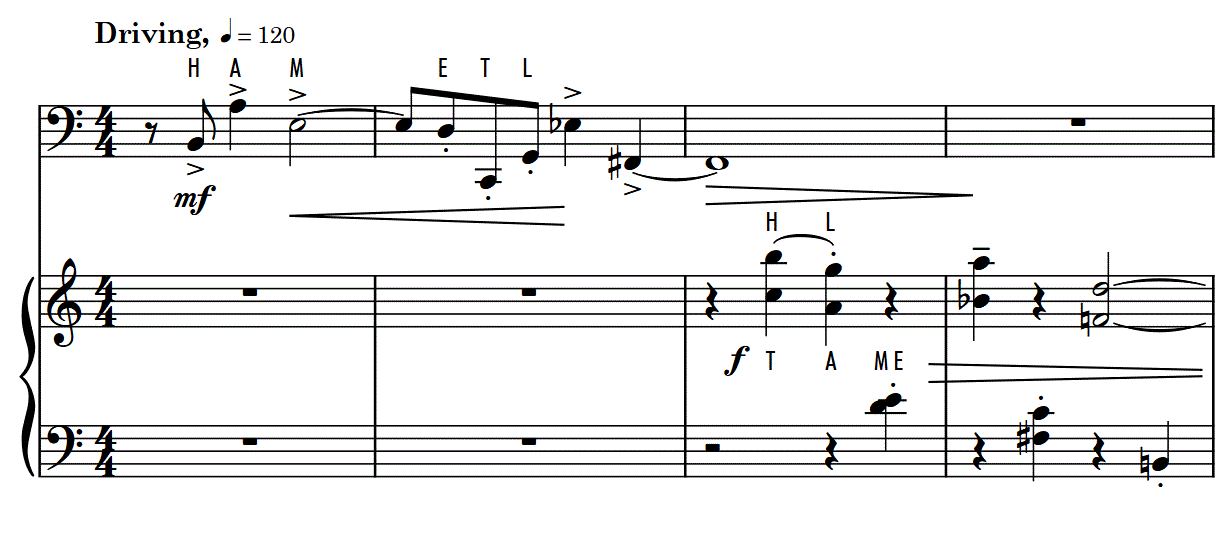
turning NAMES
INTO music


The most obvious spelling of "Hamlet" yields only 3 different pitches—not much to compose with. Not only that, the first and last notes are the same, which makes this “theme” oppressively short. So right from the onset, I was faced with a choice: use two B’s or not two B’s. When I first realized this, I didn’t know whether to groan or laugh. It seems that the universe told me a horrible pun!
In any event, here is the musical spelling I used instead:
The real challenge in this game is making the resulting series of notes to sound musical. Not only that, but the music must create the right mood for its spot in the play. For example, the ambiance of Ophelia’s tune harkens back to Shakespeare’s own Renaissance past, while the music for Rosencrantz and Guildenstern (who serve as spies for the corrupt King Claudius) has a certain film noir quality. And the six notes that spell Hamlet need to be reworked throughout the play to reflect his changing moods and insights.
At the same time, I had some fun with some of the orderings. For example, Rosencrantz and Guildenstern’s theme both represents their own names as well as an inverted spelling of the protagonist’s own name: “letHam.” And as you'll see below, Ophelia’s name is doubly imprinted in her tune.


William Shakespeare

Josquin De Prez
In her introduction to the Penguin edition of Hamlet, Shakespeare scholar Anne Barton points out that
As I was looking for a way to draw connections between the various pieces of incidental music for Hamlet, I decided to play some games, too; this time with notes. All the pieces I composed are derived from musical spellings of the characters’ names. The concept is not original. It’s a technique called “soggeto cavato,” a Renaissance musical game created by composer Josquin de Prez, who lived just a generation before Shakespeare. In soggetto cavato, a composer uses one of more musical alphabets to “spell” words or names.
As most musical alphabets have only seven letters, a composer often needs to draw from all sounds within a note name. For example, “sol” (the note G) might
represent the letters “S, O, or L.”
Like the witty characters of the comedies, [Shakespeare] likes to play games with language, to parody other characters’ verbal styles, and he has a predilection for puns, bawdy double entendres, and sophisticated badinage which links him with figures like Petruchio, Berowne, Benedick, or even Touchstone and Feste. [p. 23]

For the last syllable of Horatio’s name, I used the Japanese musical alphabet, because neither C (Do) nor G (Sol) sounded good to me.




In this cue, the "letters" H and M (B and G) remain constant, while the rest of the letters in Hamlet's name rotate around them. The motif B-G becomes a way to refer to Hamlet through the rest of the play.

I couldn't resist starting this cue with two B's.

